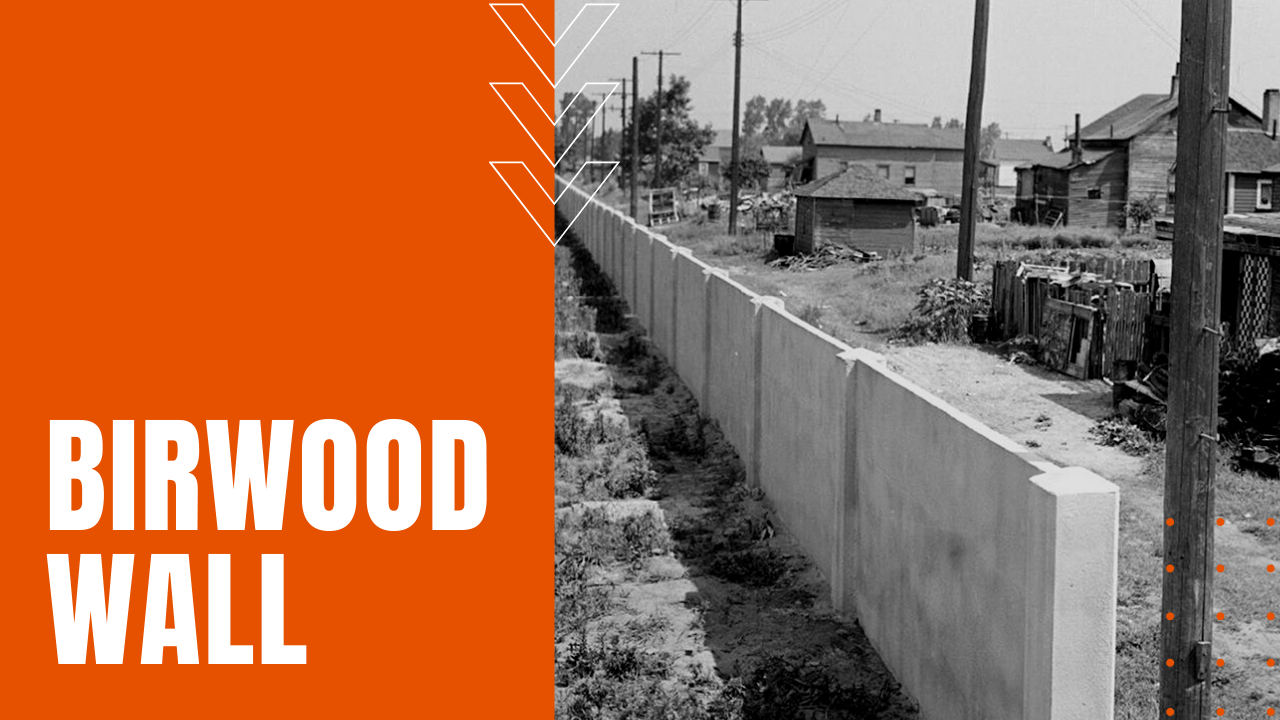Birwood Wall: Symbol of Hate Reframed to Heal

While many Detroit white men were off fighting World War One, African Americans migrated from northern and southern cities to fill the labor vacuum, but when white veterans returned home after the war, racial tensions began to rise over both jobs and housing, which only intensified during the lean years of The Great Depression.
In 1941, attempting to respond to the housing shortage, a real estate developer in northwest Detroit faced a dilemma when he set out to build an all-white housing subdivision that butted up against a mostly African American neighborhood. When his bank turned down his construction loan application due to the potential for racial tension, he built the now-infamous Birwood Wall as a physical separation between the two communities.
Detroit’s Birwood Wall Segregation
Known as the Birwood Wall or Detroit’s Wailing Wall, the half-mile structure covers three city blocks for the sole purpose of racial segregation. The wall begins across the street from the northern boundary of Van Antwerp Park, on Pembroke Avenue between Birwood and Mendota streets, extending north until just shy of 8 Mile Road.
An exposed stretch of the wall with no homes to the east runs through Alfonso Wells Memorial Playground, between Chippewa Avenue and Norfolk Street. The Birwood Wall stands five feet tall by one foot thick, and while it originally served to divide two communities by the color of their skin, by 1971, residents on both sides of the wall were now predominantly Black.
After years of resentment over the Birwood Wall, in 2006, community activists and Detroit residents came together to flip the wall from a symbol of hatred to an act of healing, allowing artists to express themselves in murals, which include such varied depictions of a cappella singers and Rosa Park’s now-infamous bus ride. In 2021, the wall was listed on the National Register of Historic Places, establishing the Birwood Wall not only as a reminder and recognition of America’s racist past, but also of a new hope for lasting equality, now and into the future.
